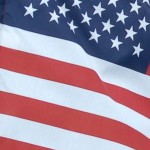National Handwriting Day stresses the importance of legibility. The day honors John Hancock’s birthday. John Hancock clearly and prominently signed the Declaration of Independence. Idea: Children could write, using their best penmanship, a thank you note to someone.
John Hancock (born Braintree, Massachusetts, 1737; died Quincy, Massachusetts, October 8, 1793) was an American patriot. He deliberately made his signature on the Declaration of Independence very prominent. His political activities irritated the British, and they started the famous march to Concord. After the war, he served as governor of Massachusetts for a number of years. Idea: Show the children a copy of the Declaration of Independence and his famous signature. Have a signature writing event where they try to copy his style. Jean Fritz wrote Will You Sign Here, John Hancock? Children might enjoy reading the book. Children could also learn more at: John Hancock.
Gertrude Belle Elion (born New York, New York, 1918; died Chapel Hill, North Carolina, February 21, 1999) was a scientist and inventor. In 1988 she was one of two people to earn the Nobel Prize in medicine for her work finding anti-leukemia drugs. In 1991 she became the first woman to be inducted into the National Inventors Hall of Fame. She received 45 patents before she died in 1999. Children can learn more at: Gertrude Belle Elion.
Joseph Hewes (born Kingston, New Jersey, 1730; died Philadelphia, Pennsylvania, November 10, 1779) signed the Declaration of Independence. He represented North Carolina. The son of Quakers, he started his career as an apprentice to a merchant. Soon he moved to North Carolina and became a very successful merchant using many ships. At first he opposed a break with England, but he changed his mind. He worked tirelessly to establish a navy for the colonies. However, he died before the Revolutionary War ended. Children could learn more at: Joseph Hewes.
Edouard Manet (born Paris, France, 1832; died Paris, France, April 30, 1883) was an impressionist painter. Born into a wealthy family, he counted Monet, Renoir, Degas, and Pissarro as friends. His brother married the painter Berthe Morisot. His paintings shocked the art community at the time. Children could visit a website at: Manet.
 United States celebrates Independence Day. It declared itself free of English rule in 1776. Interestingly, only two people, John Hancock and Charles Thompson, signed the Declaration of Independence that day. Most of the representatives signed the document on August 2, 1776. Idea: Children could read Fireworks, Picnics, and Flags: The Story of the Fourth of July Symbols by James Cross GIblin and Ursula Arndt. Children could plan and carry out a Fourth of July parade. They could also learn more at: Fourth of July.
United States celebrates Independence Day. It declared itself free of English rule in 1776. Interestingly, only two people, John Hancock and Charles Thompson, signed the Declaration of Independence that day. Most of the representatives signed the document on August 2, 1776. Idea: Children could read Fireworks, Picnics, and Flags: The Story of the Fourth of July Symbols by James Cross GIblin and Ursula Arndt. Children could plan and carry out a Fourth of July parade. They could also learn more at: Fourth of July.
 Declaration of Independence was officially signed in 1776. Most people believe the Declaration was signed July 4, 1776. However, only John Hancock and Charles Thompson signed a draft on that day. Fifty delegates were at the official signing on August 2. Five more people signed the document before the end of the year. One more person signed it the following year. Children can examine a GREAT table of information regarding the signers of the Declaration of Independence at: Signers.
Declaration of Independence was officially signed in 1776. Most people believe the Declaration was signed July 4, 1776. However, only John Hancock and Charles Thompson signed a draft on that day. Fifty delegates were at the official signing on August 2. Five more people signed the document before the end of the year. One more person signed it the following year. Children can examine a GREAT table of information regarding the signers of the Declaration of Independence at: Signers.